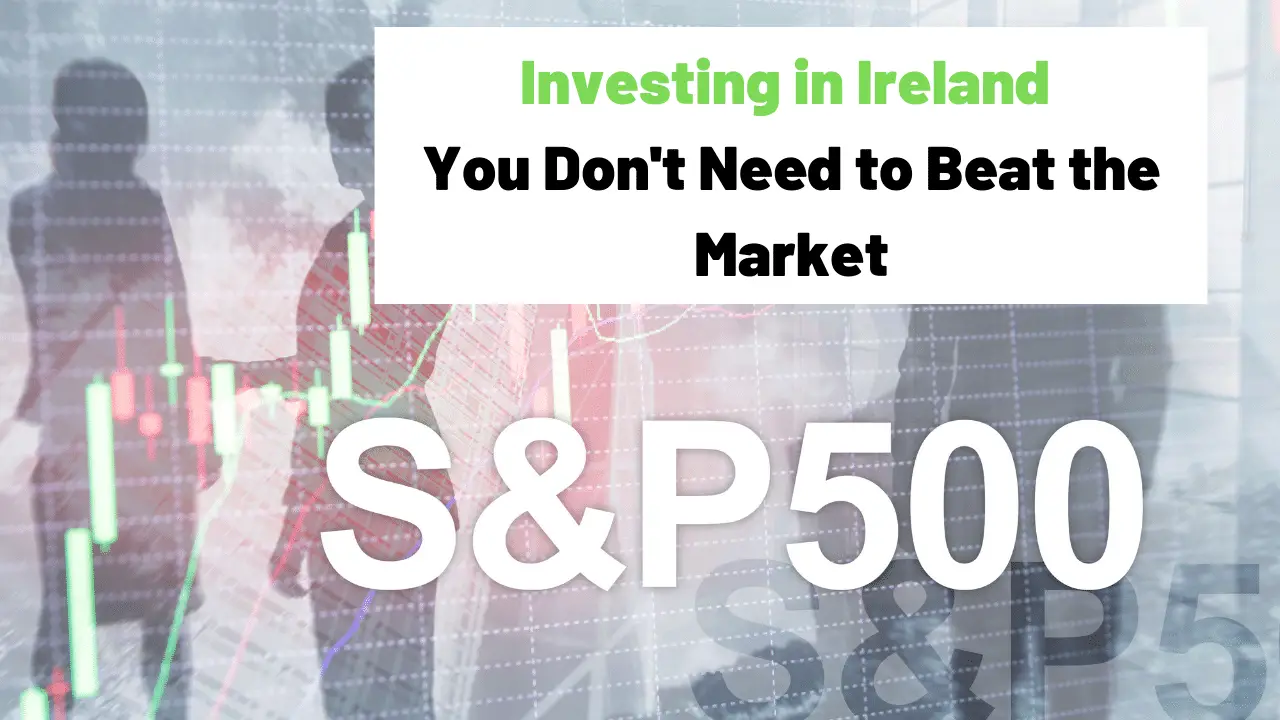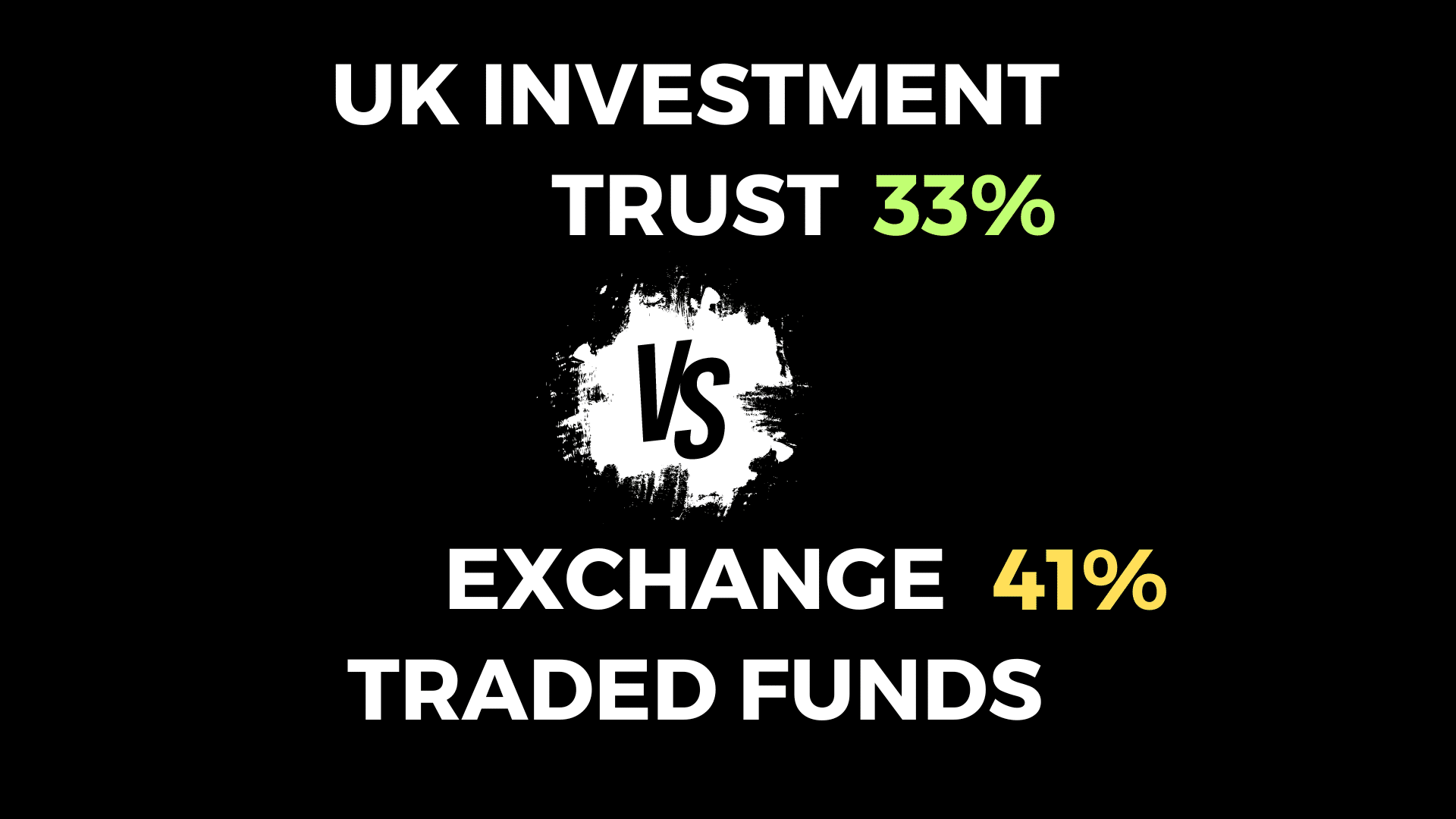Can regular investors beat the market consistently? The overwhelming evidence is that it is very hard for investors to earn better returns than the market over the long term.
Even highly paid and educated hedge fund managers that do this every day for a living are rarely able to outperform the S&P 500. According to a recent Morningstar report over the past 10 years, only 25% of actively managed funds actually beat their passive counterparts.
This would make you think it would be foolish for any Irish investor to go and pick a bundle of stocks as opposed to putting all of their lump sums into an Index Fund that tracks the S&P 500 such as Vanguards VUSA Fund. Let’s take a closer look at this dilemma strictly from an Irish investors perspective.
The rules of the investing game are different in Ireland to most other countries, the main reason being how both different investment vehicles are taxed. Both Stocks and ETFs have completely different tax rules and rates which can skew the results of simply investing solely in ETFs tracking passive index funds.
First of all, when you make a realised profit on stocks in Ireland you will pay a capital gains tax rate of 33% – if you make a loss then they are also available to offset against any other profits you have made. Not only that, each individual in Ireland is entitled to an annual capital gains tax exemption of €1,270 per year that can be used to reduce taxable profits.
Now let’s consider the tax treatment for ETFs, you will pay tax at a higher rate of 41% (exit tax) on all profits and income distributions. You will even be required to pay tax on unrealised profits under the deemed disposal rule if you have not sold your investment after 8 years. Besides the higher tax rate, the other downsides of ETF investing are that any losses made are not available for offset against profits on other ETFs and there is no annual exemption.
To analyse this further we need to look at some practical examples of what the result of these tax differences is on your investment income.
The Net Effect of CGT (33%) vs Exit Tax (41%)
In our example, we are going to assume in the year 2022 the S&P 500 gave investors a 10% return (not very likely at the time of writing 🙁 ).
If an individual invested €5,000 in an ETF which returned 10%, this would result in them earning a pre-tax profit of €500, after we deduct the 41% exit tax we get a profit after tax of €295.
The key now to our exercise is to calculate what percentage return are you required to make when investing in stocks to achieve the same post-tax profit as investing in ETFs.
If you wanted to achieve the exact same post-tax profit of €295 with a €5,000 investment in stocks, you would only need to achieve a return on the stocks of 5.90%. This means you the person investing in stocks can earn the same level of profit with much lower percentage returns.
The below table repeats this calculation for many different levels of investment between €5,000 and €80,000.
| Investment amount € | €5,000 | €10,000 | €20,000 | €30,000 | €40,000 | €50,000 | €60,000 | €70,000 | €80,000 |
|---|---|---|---|---|---|---|---|---|---|
| ETF Return | 10% | 10% | 10% | 10% | 10% | 10% | 10% | 10% | 10% |
| ETF Profit post tax | €295 | €590 | €1,180 | €1,770 | €2,360 | €2,950 | €3,540 | €4,130 | €5,130 |
| Stock Return | 5.9% | 5.9% | 5.9% | 6.7% | 7.2% | 7.6% | 7.9% | 8% | 8.1% |
| Stock Profit post tax | €295 | €590 | €1,180 | €1,770 | €2,360 | €2,950 | €3,540 | €4,130 | €5,130 |
As you can from the table above to match the profits of a 10% return on an ETF by investing in stocks you only need to get to a return of 5.90% when you are investing with amounts between €5,000-€20,000.
The percentage is lower for these amounts due to the annual capital gains tax exemption of €1,270 reducing the tax on profits made from stocks. As the level of investment increases, the effect of this diminishes. The percentage return required on stock starts to increase from this point gradually.
If you were to invest €80,000 in an ETF and achieve a 10% return you would earn a post tax profit of €5,130, a similar post tax profit can be achieved by investing in stocks with just an 8.1% return.
It may be easier for you to visualise this effect on a graph.

Easier said than done
The data we have talked about in the previous section is important to be aware of when choosing which investment vehicle to go with. Even though lower returns are required on stocks to achieve the same result, you will have to spend far more time researching what stocks to invest in and managing your portfolio compared to simply investing in an ETF.
And there are no guarantees you will be able to achieve the levels of returns needed to replicate the performance of popular ETFs.
From our data though it is clear that your stocks do not have to perform as well as the overall market for you to make the exact same profits when investing in Ireland.
If you enjoyed this post then you might also be interested in what level of insight the Revenue Commissioner has into your investments.
Disclaimer: this blog post is for informational and educational purposes only and should not be construed as financial advice.






